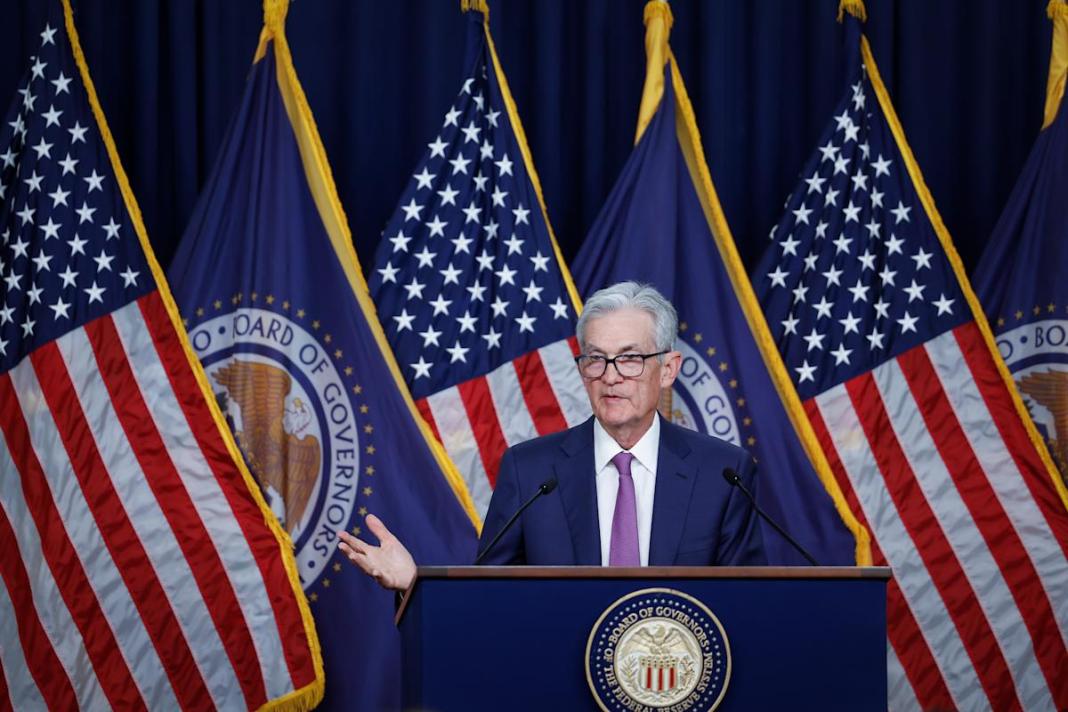Investors are pushing back bets on when the Federal Reserve will begin cutting interest rates, but many Wall Street strategists believe this won’t alter stocks’ charge higher in 2024.
After a key inflation report showed an unexpected uptick in consumer prices last month on Wednesday, investors are now pricing in just two interest rate cuts in 2024, down from a peak of seven in early January.
Despite the market’s pullback in reaction to the latest inflation data on Wednesday, stocks have largely been resilient with regard to moves in interest rate expectations this year, with the S&P up about 8% to date — so a shift in market expectations for Fed policy is unlikely to derail the stock market rally.
Wells Fargo chief investment strategist Christopher Harvey, who boosted his year-end target for the S&P 500 (^GSPC) to a Street-high 5,535 on Monday, told Yahoo Finance the most important part of the Fed discussion remains that easing is still in the pipeline.
“The big and important thing is that the Fed is going to start a multiyear easing cycle,” Harvey said. “We can argue about when, and how much, but it’s the fact that it’s a multiyear easing cycle.”
Market bulls have also been encouraged by limited signs that high interest rates are slowing corporate earnings or US economic growth. Consensus estimates are for earnings growth to pick up throughout the year.
“It’s really about earnings,” Bank of America US and Canada equity strategist Ohsung Kwon told Yahoo Finance when explaining why the S&P 500 could still hit his firm’s 5,400 year-end S&P 500 target even if the Fed doesn’t cut rates this year.
Kwon and other strategists who have spoken with Yahoo Finance in recent weeks have all expressed the same sentiment: It doesn’t matter when, or how much, the Fed cuts this year. It might not even ruin the market rally if the Fed doesn’t cut at all in 2024. What matters most is why the Fed lowers rates when it does.
An increasing number of economists see the improving economic growth outlook creating an elevated chance that the Fed could cut rates by less than previously thought, if it cuts at all. This is often referred to as a “no landing scenario,” where economic growth accelerates while inflation’s path downward slows.
Overall, this isn’t all bad for the major indexes given it would come with a positive economic growth backdrop, a reason why strategists believe earnings growth could broaden beyond just technology later this year. It could, however create further bifurcation between large- and small-cap stocks.
In a weekly note on Sunday, Morgan Stanley chief investment officer Mike Wilson wrote recent cyclical leadership from sectors like Energy (XLE), Materials (XLB), and Industrials (XLI) points to the market moving to a “no landing” scenario.
Within those moves, investors have preferred large-cap companies, per Wilson’s analysis. Small caps, Wilson noted, have shown more rate sensitivity and fallen further than the broader market on days when bond yields rise.
This played out on Wednesday, when the 10-year Treasury yield (^TNX) spiked more than 20 basis points and the small-cap Russell 200 index (^RUT) fell nearly 3% while the S&P 500 slipped less than 1%.
The market action underscores that investor appetite for areas like small caps, which have more exposure to refinancing debt at the current high interest rates, will remain muted as long as rate cut expectations keep moving down.
He added, “Downside in rates could further catalyze a rotation to a broader group of cyclicals and even lower quality ones with poorer balance sheets. Conversely, a break higher in yields could take us back into a narrow market regime.”
Overall, the outlook for the stock market in 2024 remains positive, with strategists confident that even if the Fed doesn’t cut rates as much as previously expected, the market rally will continue based on strong earnings growth and a positive economic backdrop.


